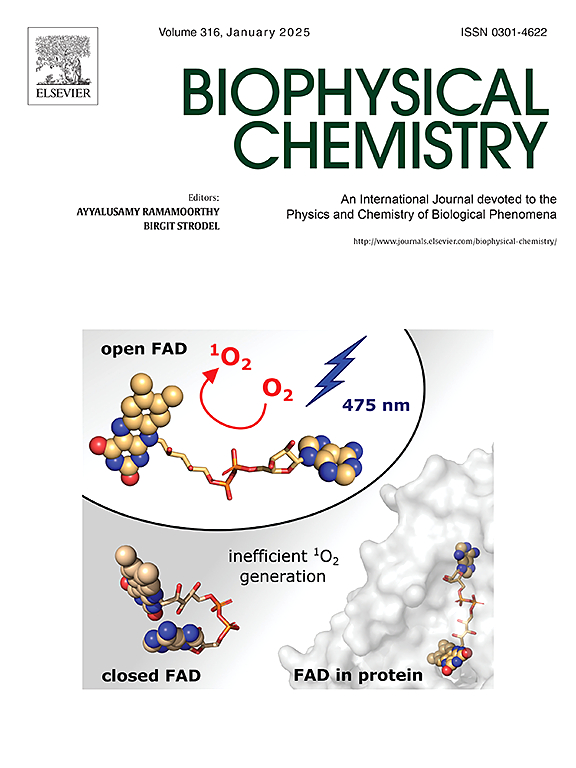土壤元基因组中能水解雌激素邻苯二甲酸酯的新型耐盐和耐溶剂酯酶 Dhs82 的特征。
IF 2.2
3区 生物学
Q2 BIOCHEMISTRY & MOLECULAR BIOLOGY
引用次数: 0
摘要
能在极端条件下发挥作用的酯酶对工业加工和环境修复非常重要。在此,我们报告了从土壤元基因组文库中鉴定出的耐盐和耐溶剂酯酶 Dhs82。Dhs82 偏爱短链对硝基苯(p-NP)酯,对对硝基苯丁酸酯的酶活性高达 1460 ± 61 U/mg 。同时,Dhs82 还能催化水解邻苯二甲酸二烷基酯,尤其是广泛使用的邻苯二甲酸二乙酯(DEP)、邻苯二甲酸二丙酯(DPP)和邻苯二甲酸二正丁酯(DBP)。重要的是,作为一种表面带负电荷的酸性蛋白质,Dhs82 在高盐度条件下具有高度活性和超常稳定性。这一特性在之前报道的能够降解邻苯二甲酸酯(PAEs)的酯酶/水解酶中非常罕见。此外,在溶剂存在的情况下,Dhs82 的活性可在 10-30 %(v/v)的浓度范围内显著增强。值得注意的是,Dhs82 对这些溶剂也表现出很高的稳定性,溶剂浓度高达 50-60 % (v/v) 时才能使 Dhs82 失活。此外,分子对接揭示了参与 Dhs82 与 DBP 相互作用的关键残基,包括催化三元组(Ser156、His281 和 Asp251)以及周围的 Gly84 和 Gly85,描绘了 Dhs82 如何作为 IV 族酯酶降解 PAE。Dhs82 的这些不同特性使其成为基础研究和生物技术应用的重要候选物。本文章由计算机程序翻译,如有差异,请以英文原文为准。

Characterization of a novel salt- and solvent-tolerant esterase Dhs82 from soil metagenome capable of hydrolyzing estrogenic phthalate esters
Esterases that can function under extreme conditions are important for industrial processing and environmental remediation. Here, we report the identification of a salt- and solvent-tolerant esterase, Dhs82, from a soil metagenomic library. Dhs82 prefers short-chain p-nitrophenyl (p-NP) esters and exhibits enzymatic activity up to 1460 ± 61 U/mg towards p-NP butyrate. Meanwhile, Dhs82 can catalyze the hydrolysis of dialkyl phthalate esters, especially the widely-used diethyl phthalate (DEP), dipropyl phthalate (DPP) and di-n-butyl phthalate (DBP). Importantly, as an acidic protein with negative charges dominating its surface, Dhs82 is highly active and extraordinarily stable at high salinity. This property is quite rare among previously reported esterases/hydrolases capable of degrading phthalate esters (PAEs). In addition, Dhs82 activity can be significantly enhanced in the presence of solvents over a concentration range of 10–30 % (v/v). Notably, Dhs82 also showed high stability towards these solvents and solvent concentrations as high as 50–60 % (v/v) are required to inactivate Dhs82. Furthermore, molecular docking revealed the key residues, including the catalytic triad (Ser156, His281, and Asp251) and the surrounding Gly84 and Gly85, involved in the interaction of Dhs82 with DBP, depicting how Dhs82 degrades PAEs as a family IV esterase. Together, these diverse properties make Dhs82 a valuable candidate for both basic research and biotechnological applications.
求助全文
通过发布文献求助,成功后即可免费获取论文全文。
去求助
来源期刊

Biophysical chemistry
生物-生化与分子生物学
CiteScore
6.10
自引率
10.50%
发文量
121
审稿时长
20 days
期刊介绍:
Biophysical Chemistry publishes original work and reviews in the areas of chemistry and physics directly impacting biological phenomena. Quantitative analysis of the properties of biological macromolecules, biologically active molecules, macromolecular assemblies and cell components in terms of kinetics, thermodynamics, spatio-temporal organization, NMR and X-ray structural biology, as well as single-molecule detection represent a major focus of the journal. Theoretical and computational treatments of biomacromolecular systems, macromolecular interactions, regulatory control and systems biology are also of interest to the journal.
 求助内容:
求助内容: 应助结果提醒方式:
应助结果提醒方式:


